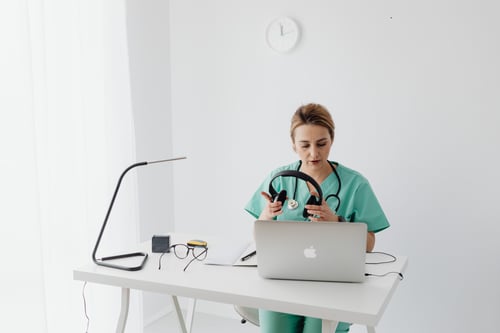In another sign of the growing telemedicine software market, healthcare practitioners continue to expand virtual care and telehealth platforms by providing a greater array of virtual healthcare services.
On October 28, 2021, NorthShore University HealthSystem announced its partnership with TytoCare to help providers diagnose and treat patients using telehealth. NorthShore serves residents across the Chicago metropolitan area and operates six hospitals. The health system consists of more than 3,000 physicians, 120 offices, and 17,000 team members, and 36 immediate care centers.
TytoCare is the first all-in-one modular device and examination platform for AI-powered, on-demand, remote medical exams. The integration of the TytoCare device and platform into NorthShore's current telehealth appointments enhances the health system's ability to diagnose and treat patients remotely with in-depth, physical examinations during video visits.
This is an exciting partnership as it brings together two trends in healthcare, the use of AI to diagnose and treat patients and telemedicine to expand access to care.
No shortage of telemedicine expansion
In October 2021, Cigna Health Plan announced it is significantly expanding access to covered virtual care services, including digital-first primary, dermatology, behavioral and urgent care. The expansion is thanks to the acquisition of MDLIVE by Evernorth, Cigna's health services business.
In August 2021, CVS Health launched a telehealth platform that combines in-person and virtual care for self-funded businesses. Aetna Virtual Primary Care is the first nationwide virtual primary care solution. This new care experience is powered by Teladoc Health’s physician-led care team model and complemented by Atena’s provider network, and the services CVS Health provides in the community.
It follows Amazon’s nationwide rollout of its Amazon Care platform in March 2021. Amazon Care is unique as it offers virtual care via in-app messaging or video and in-person care, where a medical professional can be dispatched to a patient’s home for prescription delivery or routine blood draws and examinations. The market also saw Walmart’s acquisition of MeMD in May and the expansion of its telehealth footprint in addition to its community clinics, and efforts by Walgreens through its partnership with Village MD to secure more of the marketplace.
These corporate acquisitions and partnerships show that the market will continue to grow, and big players, such as Amazon, Walmart, Walgreens, and CVS want to be part of that growth and want to ensure access to the communities they serve.
Broadband connectivity and telemedicine are part of the infrastructure
The US Department of Agriculture unveiled more than $1.15 billion in federal loans and grants for broadband expansion in rural regions, alongside $50 million in funding for 105 distance learning and telemedicine projects in 37 states and Puerto Rico. This announcement came as the Federal Communications Commission (FCC) has provided 194 organizations with a total of $123 million in funding for the COVID-19 Telehealth Program.
And at the same time, the FCC is getting ready to announce more award winners in its Connected Care Pilot Program, which provides funding for projects to cover 85% of the eligible costs of broadband connectivity, network equipment, and information services necessary to provide connected care services to the community.
The federal government is making a concerted effort to link broadband connectivity and telehealth to the nation’s infrastructure by funding projects that allow communities to gain access to quality healthcare.
What does G2 data tell us?
Telemedicine software is one of the hottest trends in healthcare right now, as companies look to adopt technology that will give them an edge in patient engagement and experience. Companies that are adopting these telemedicine tools understand the importance of providing access to quality and convenient care.
On the patient side, personalization has become a key focus. Providers want patients to have customized experiences that speak to their health concerns and goals. Software can help with personalized branded health plans, chatbots to answer questions, and on-demand appointments, and automated patient scheduling.
G2’s data suggests there is little room for improvement on the implementation side. In G2’s Fall 2021 reports, reviewers gave telemedicine products an average score of 93% for ease of setup. And overall, products in the Telemedicine category had a “likelihood to recommend” score of 92% on average, suggesting that users are finding a lot of value in these systems.
The recent increase of telemedicine-related M&A and funding activity, combined with the technology's demonstrated value, reveal a space primed to push healthcare forward.



 by Rachael Altman
by Rachael Altman
 by Rachael Altman
by Rachael Altman
 by Rachael Altman
by Rachael Altman